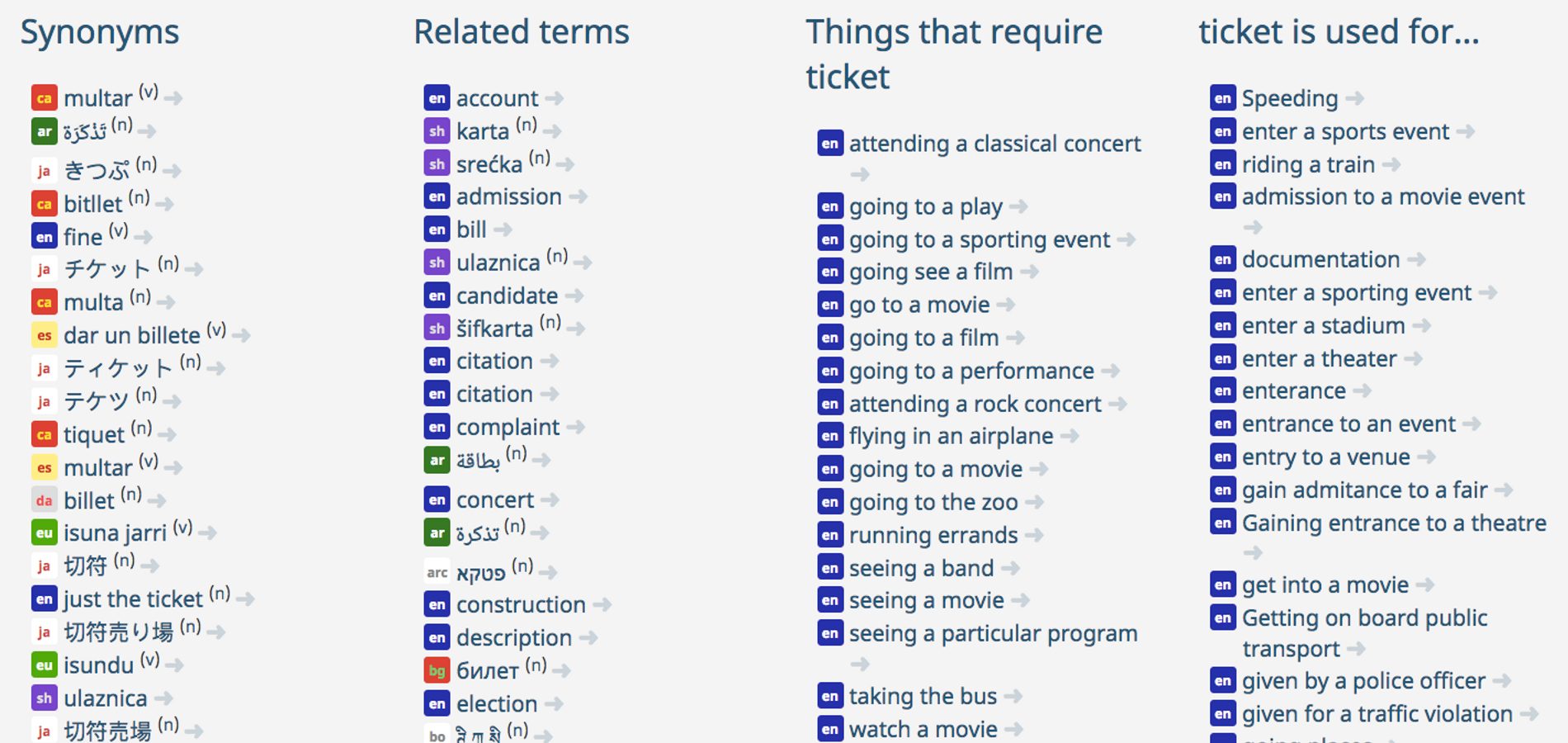One can be issued a ticket, purchase a ticket, submit a ticket, or even be on a ticket.
With so many variations, let’s first tap into what ConceptNet knows about Tickets:

Origin of Tickets
This multi-dimensional word started out small in the early 16th century, stemming from the French word “estiquette,” meaning “a little note, often affixed to a wall or gate,” which was shortened to ticket. Then, in 1670, the word morphed into “a card or piece of paper that gives its holder a right or privilege.” In 1711, political meaning was added to denote “a list of candidates put forward by a faction,” and again in 1930 the word took on, “an official notification of offense.”
Nowadays, tickets are also synonymous with the field of information technology, representing a request submitted to a work tracking system for issues that need to be fixed or tasks that must be performed.
How most natural language systems deal with tickets
There are generally three camps when it comes to ticket classification:
- Heavy reliance on (expensive and slow) humans to manually classify tickets, and then hand them off to specialists who review and tag each ticket for intent and priority.
- Investing in scripts or open-source keyword-matching technologies that provide a low level of automation with poor, yet predictable results.
- Relying on data scientists to build or acquire supervised classifiers that provide a reasonably accurate tagging system, but one that still requires a mountain of labeled examples to train the system.
How Luminoso processes tickets
Luminoso’s Compass product takes a different approach by providing a suite of classifiers that only require a fraction of the data compared to competing systems.
Typically, depending on the customer’s use-case, we will opt for supervised classifiers when there is labeled data available. We’ll use sentiment classifiers to understand customer’s emotions, both positive and negative so that we can tune into and understand domain-specific sentiment locked within the jargon. And finally, we’ll opt for semi-supervised classifiers when the topics are set by the business, but no labels exist.
Compass also has the ability to combine or “chain” classifiers as a way of tailoring the flows and support the complexities of modern business. This would include things like classifying support tickets for a set of features within a television, for instance (sounds, monitor, remote, etc.,) then classifying each category by sentiment, unique to each feature. This allows Compass to learn and adapt over time by automatically linking data, leading to higher classification performance.
To learn more about how we’re helping companies route and auto-respond to support tickets, check out our previous blog post.



























